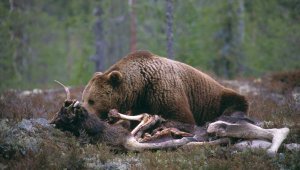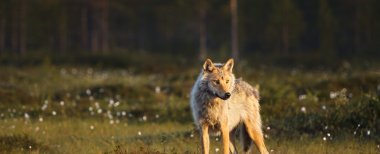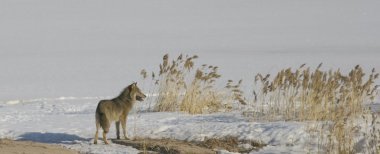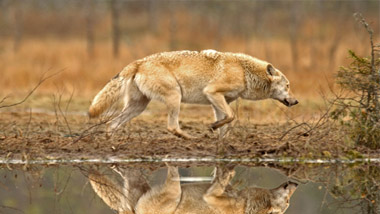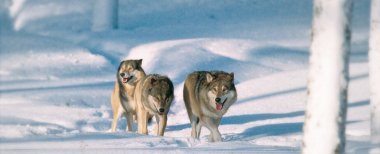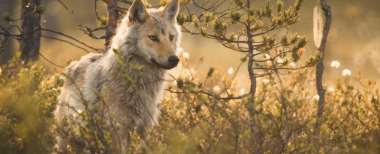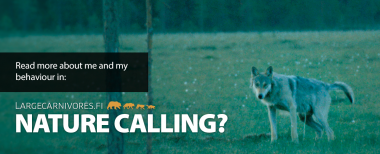Wolf hunting
Wolf hunting is only really possible when there is snow on the ground. The tracks in the snow tell the hunters where the wolves have settled for the day. When their location is known, the wolves are encircled in a circle that is large enough to ensure that the wolves are not scared off too early. When it is certain that the wolves have been completely surrounded, the encirclement is marked with flag line.
Implementation of the Wolf Management Plan Well Underway
Wed Jun 08 09:00:00 2016
Already 30 of the 59 concrete measures in the Wolf Management Plan have been realized. One of the plan’s measures has been the effective intervention in cases where the wolves have visited people’s yards; these wolves have been chased away and the reasons for these visits have been examined. The project aims to find functional and commonly accepted ways for their prevention.
In order to secure and develop the wolf population’s monitoring, the Finnish Wildlife Agency has organized training events centered on predator observation and recording for all new Large Carnivore Contact Persons since last autumn. In order to prevent and minimize the damages to livestock, the Finnish Wildlife Agency has supported stock farmers in the acquisition and delivery of electric fence materials. In addition, neutral wolf information has been widely distributed to the citizens, especially during events organized in wolf territories.
Listening to the locals
In addition to direct measures, the management plan introduces nine projects that aim to find new solutions to the difficult central issues regarding wolf population management. Seven of the projects are actively underway, and one of them focuses on the population-based hunting of wolves as part of a two-year trial. The trial’s results and a decision regarding its future continuation are due this autumn. The Finnish Wildlife Agency has been the lead partner in many of the aforementioned measures and projects.
The new Wolf Management Plan aims to make the locals’ voices heard. Their active participation and influence in the management plan’s development has formed the basis for the foundation of territory-specific cooperation groups which, for instance, plan the prevention of wolf-related damages, the improvement of information sharing, and the strengthening and development of cooperation measures in their own wolf territories. Their goal is to come up with practical and realizable measures. A total of 20 cooperation groups have been established in different wolf territories, and their work is supported and assisted by the Finnish Wildlife Agency.
The purpose of the Wolf Management Plan and its projects is to find functional solutions for the management of the wolf populations and to improve the coexistence between humans and wolves.
For more information
Samuli Karppinen, Planner of the Wolf Territory Coordination project, Finnish Wildlife Agency
029 431 2124, samuli.karppinen@riista.fi
Management plan for the Finnish wolf population
The population management plan for Finnish wolves approved in 2005 was the first of its kind. It was also the first wolf management plan to be renewed. The Finnish Wildlife Agency and Natural Resources Institute Finland worked together to create an updated management plan for wolf, which was then ap...
The Hunting Act and the relevant decrees
The bear, the wolf, the lynx and the wolverine are considered game animals. Legislation concerning game animals is laid out in the Hunting Act. More detailed provisions are found in the Hunting Decree, the Government Decree on Derogations Laid Down in the Hunting Act, and the species-specific Decree...
Sightings as the basis of population estimates
Natural Resources Institute Finland's (Luke) estimates on the numbers of animals are primarily based on sighting data collected by a volunteer organisation consisting of the contact persons of regional game management associations. Other utilised methods include on-the-ground censuses made by hunter...
